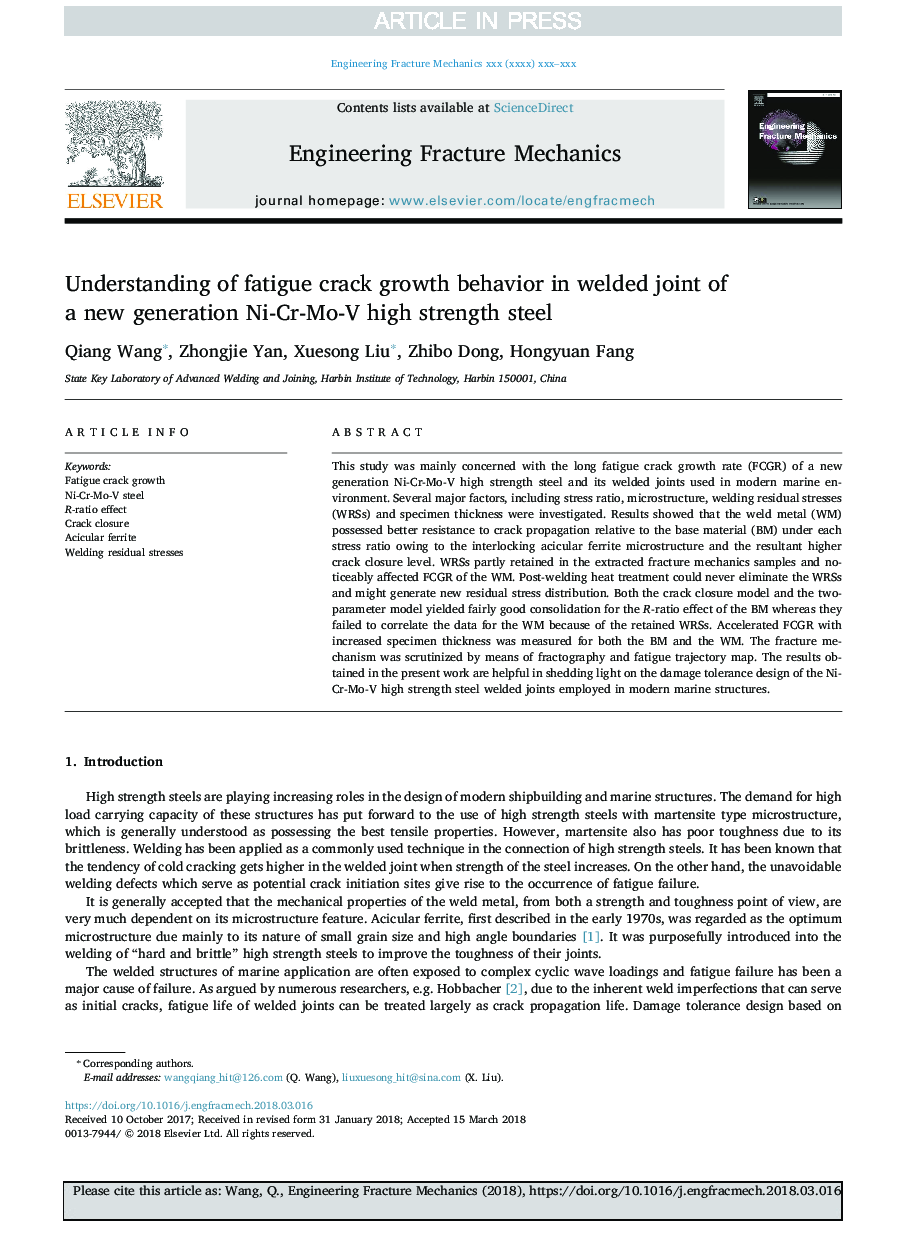| Article ID | Journal | Published Year | Pages | File Type |
|---|---|---|---|---|
| 7168888 | Engineering Fracture Mechanics | 2018 | 16 Pages |
Abstract
This study was mainly concerned with the long fatigue crack growth rate (FCGR) of a new generation Ni-Cr-Mo-V high strength steel and its welded joints used in modern marine environment. Several major factors, including stress ratio, microstructure, welding residual stresses (WRSs) and specimen thickness were investigated. Results showed that the weld metal (WM) possessed better resistance to crack propagation relative to the base material (BM) under each stress ratio owing to the interlocking acicular ferrite microstructure and the resultant higher crack closure level. WRSs partly retained in the extracted fracture mechanics samples and noticeably affected FCGR of the WM. Post-welding heat treatment could never eliminate the WRSs and might generate new residual stress distribution. Both the crack closure model and the two-parameter model yielded fairly good consolidation for the R-ratio effect of the BM whereas they failed to correlate the data for the WM because of the retained WRSs. Accelerated FCGR with increased specimen thickness was measured for both the BM and the WM. The fracture mechanism was scrutinized by means of fractography and fatigue trajectory map. The results obtained in the present work are helpful in shedding light on the damage tolerance design of the Ni-Cr-Mo-V high strength steel welded joints employed in modern marine structures.
Related Topics
Physical Sciences and Engineering
Engineering
Mechanical Engineering
Authors
Qiang Wang, Zhongjie Yan, Xuesong Liu, Zhibo Dong, Hongyuan Fang,
